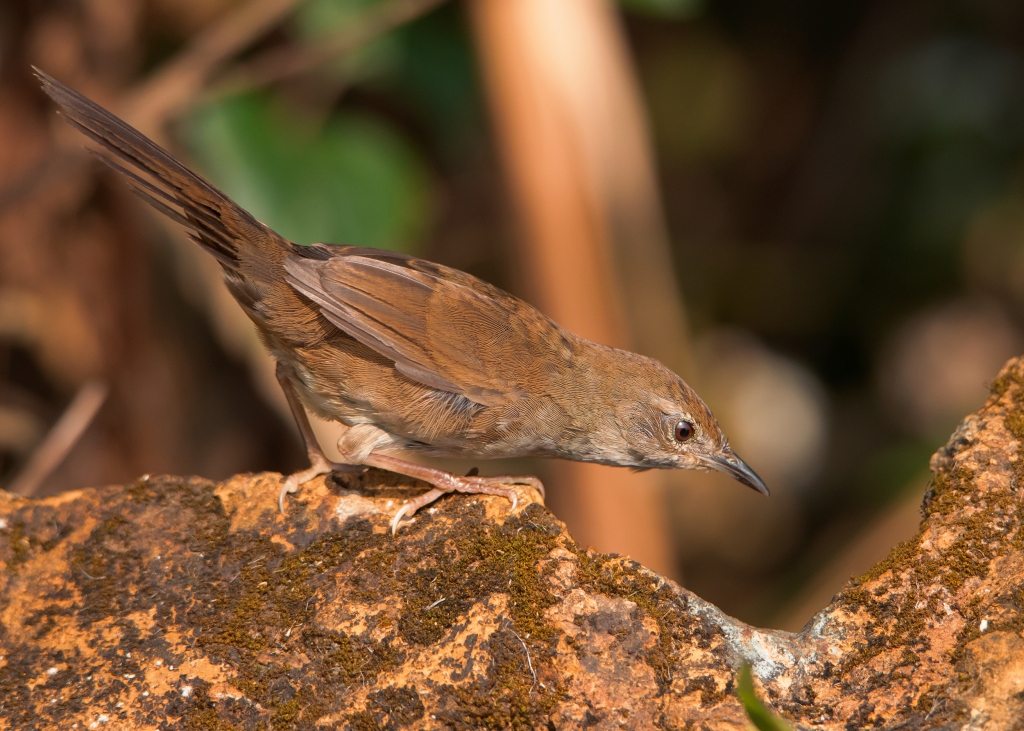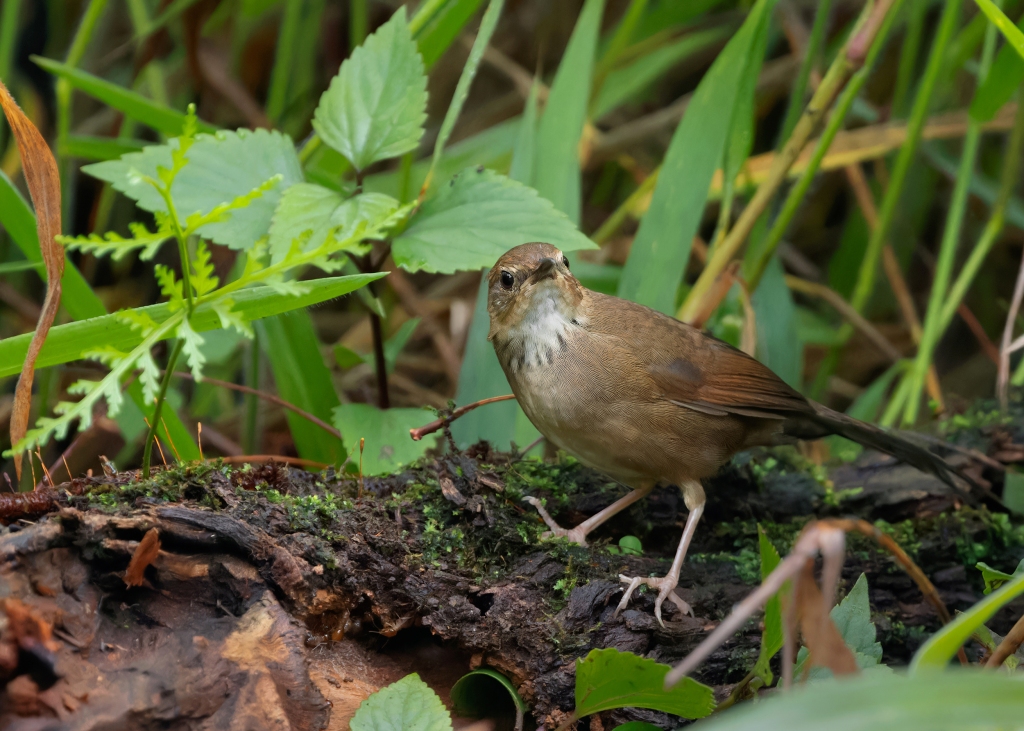It has somehow become my annual mission to look for the secretive Russet Bush Warbler (Locustella mandelli) in the wet season. This species is the only breeding Locustella warbler in Thailand. It is known to breed on high mountains in northern Thailand, typically above 1,000 m. It is one of the few highland species that actually benefit from deforestation as it prefers grassy habitats and open, disturbed forests.

There are many places throughout northern Thailand where the Russet Bush Warbler breeds, but I find Doi Chang in Chiang Rai to be among the best places to look for this species. From my experience visiting this site for the past few years, this species seems to be reliably common in the wet season. Their unusual and unmistakable, insect-like songs can be frequently heard in any grassy area near the summit. They tend to be more vocal in early morning and late afternoon but can also be heard at any time of day, especially when it’s drizzling or heavily overcast.


Despite being numerous in the right habitat, it is still a huge challenge to actually see this secretive bird. Having a bird singing at close range doesn’t necessarily mean that you will get to see it. It usually takes a lot of patience and effort to finally nail it. Unlike most migratory Locustella warblers that tend to become much bolder in the breeding ground and may sing from exposed perches, male Russet Bush Warblers almost never sings in the open. They are still as secretive when breeding as in the non-breeding season. It can be even more annoying to hear so many singing birds but see none.




Like other Locustella warblers, the Russet Bush Warblers typically feed on or near the ground, creeping quietly through dense vegetation. They are basically undetectable without hearing the call/song. That’s why there is a much higher chance to see one in the wet season when they become vocal. Not every bird is responsive to playback though. Even if they do respond, they would normally come out to the open very briefly then sing from the thickest area possible. I really had to push myself to be as fast as the birds in order to finally get these photos.



Another interesting thing about this species is the plumage variation. So far, I have photographed more than 5 different individuals and they all had some plumage differences. They can either have completely russet-brown plumage or with a variable amount of grey wash on the breast. Some may have variable amount of black spots on the upper breast, while some may completely lack any marking. It is always so fascinating to see these different details whenever I’m able to photograph one.





This post serves as a compilation of photos that I’ve been able to take of this common but rarely photographed species. Even with these, I still feel that we don’t know enough about them. I guess I’ll continue to pursue my mission in documenting these secretive birds every wet season for the next few years.

superb find
Amazing to see photos of this bird!😆 Did you have to climb Doi Chiang Dao to see it?
This spot was easily accessed by car and just a bit of walking!
Fabulous shots!